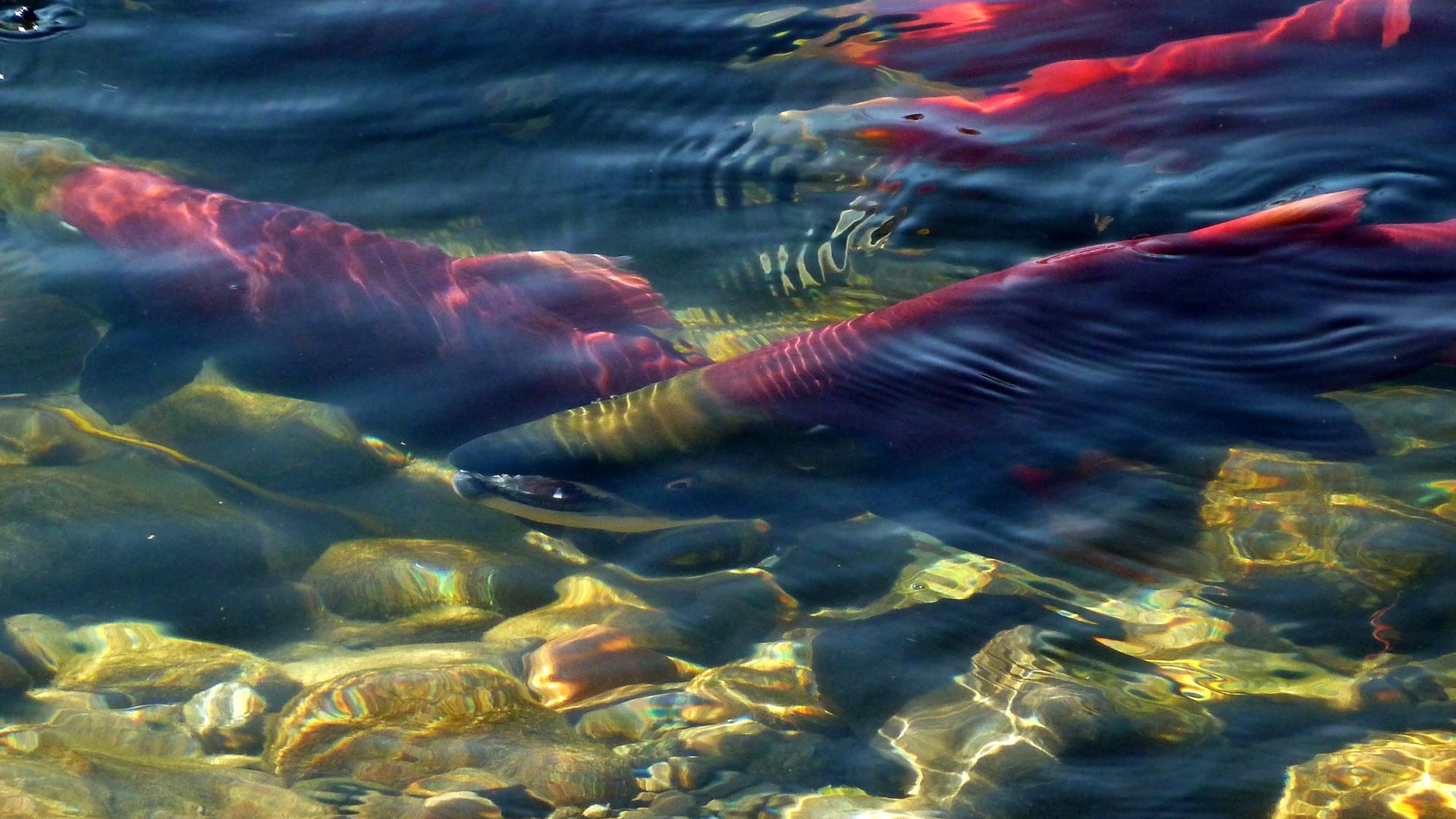Where are we on the wild salmon file?
Taking stock, salmon have been my primary issue in the legislature. My work is underpinned by a hopeful vision for the future and the notion that “good salmon policy, is good social, environmental and economic policy.”
That is the way it has been for thousands of years in British Columbia. The bounty brought to us by the sacrifice of the salmon is reflected in our rich cultural diversity and the ancient, sophisticated societies that respectfully harvested the wealth from the salmon’s annual ritual.
Let’s celebrate. Our work over the past 12 months has moved the wild salmon issue from being a bench-warmer to a “key performer” on the starting line-up. It has shown what dedicated and persistent advocacy can accomplish. And, it is not only about volume, it is also about tone and approach. A sensitive balancing act between partner and critic.
It is a big issue for British Columbia. There are a lot of politics, policy and vested interests. So, let’s wade into it.
What is the value of a dead fish?
Unless we pour a tremendous amount of resources freezing, canning, drying or smoking a fish, it gets stinky quickly. There is value in a dead fish. They sustain our bodies, our ecosystems and economy, once.
There is more value in a living fish. Living fish and healthy salmon runs, provide sustenance each and every year. The goal therefore is to understand how to sustainably harvest them so as to not upset the balance. How do we gain the value of a dead salmon, and also ensure the health and wellbeing of the living salmon?
There are those that only see the value of the dead salmon. They just want to kill salmon, process them and sell them. Their approach is very shortsighted. It is time we look back to the past experience of the Indigenous people of our province, to build our future. Each year a new generation of salmon returns to their home to sacrifice themselves for future generations. Perhaps, there is something for humans to learn here.
All levels of government have a role. No fingers can be pointed. We all must take hold of what we are responsible for.
Protection and restoration
Provincial and local governments have a responsibility for the decisions we make about habitat. We cannot afford to lose any more wild salmon habitat.
We will have to sacrifice. We might have to preserve the watershed from logging or not approve the housing development on the estuary. Our farming and stormwater management practices will probably have to change. The roads, dams and other infrastructure might need to be denied or redirected.
First, we must protect salmon habitat that is functioning. Those creeks, streams, rivers and lakes that are still producing have to be defended.
Second, we should develop an inventory of the areas that are struggling and develop a plan to restore habitat that is damaged. This will only work if the province funds it. So, that political will needs to be reflected in the appropriate budget allocations.
Conservation
The federal government needs to get control of the dead fish part. Earlier this year, we received documents that showed that the Department of Fisheries and Oceans (DFO) was not properly funding salmon stock assessments. Yet, they continue to make decisions about harvesting. With what data?
Fish farms or salmon ranching industries have evolved so we can continue to kill and consume salmon without having to make the sacrifices. These industries have let us off the hook from having to protect, restore and conserve. Well, now the stories about collapsing ecosystems and species extirpation has shaken us. Even after the promise of these industries that they have found an answer. Not so.
It is time that we have a mature discussion about commercial fishing and the sacrifices we have to make to restore the balance. Too much of the economic value of the commercial fishery is going to increasingly large corporations. In some cases foreign interests are buying the quota and the “value” is flowing off-shore. Individual fishers have become resource collectors with the benefits streaming through their nets.
We cannot continue to kill salmon like it is 1985, 1945, 1905, or 1895. It is not.
Short-term sacrifice for long-term benefit
When you think about sacrifice, do you think about pain?
The sacrifices that we have to make are not necessarily painful. Certainly, there will be impacts on the commercial fishing industry.
We are kidding ourselves if we think they are not already suffering. They are. Well, the individuals are.
The multi-nationals and super-corporations that are buying up the quotas may not be, but the small coastal communities and individuals with a boat, certainly are. We should support these fishers and their communities.
Making wild-salmon friendly policy is good for people, good for the environment and good for the economy. These sacrifices will improve our communities, our quality of life and our economy over the short, medium and long-term.
We have seen the devastation that short-term decision-making is causing. Perhaps, it is time to once again start to recognize the value in a living salmon.


0 Comments